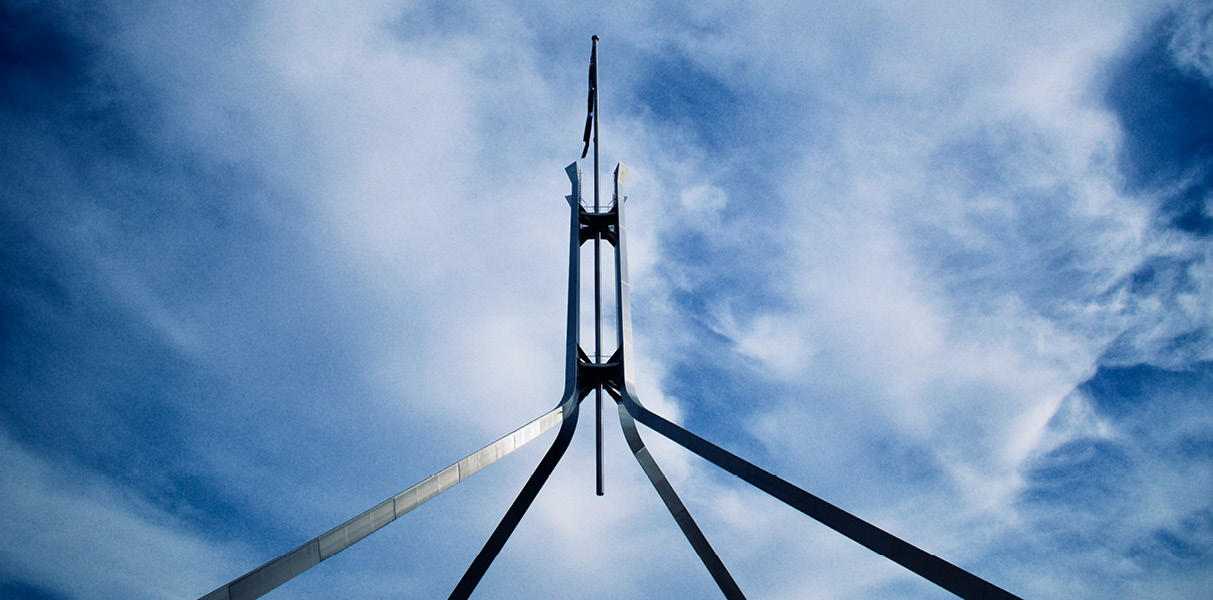What climate disclosure means for the public sector


The Australian Government recently announced it will be phasing in climate reporting requirements for Commonwealth entities. Alan Greenfield and Sarah Wood provide a summary of what’s happening at the Commonwealth level, and an update on what’s changing for states and territories.
As the private sector firmly focuses on navigating new climate-disclosure laws, government entities too are working out how they’ll be publicly reporting their own financial risks and opportunities related to climate. We look at what’s in store across the Australian public sector.
Commonwealth
The Australian Government has committed to mandatory public disclosures for Commonwealth entities and companies (which includes Commonwealth departments).
Why introduce public sector climate-risk reporting?
The aims for Commonwealth public sector disclosure are to:
- Help these organisations prepare for and respond to the changing climate
- Support the delivery of Australia’s emissions reductions targets under the Paris Agreement and the Government’s APS Net Zero by 2030 target
- Provide greater transparency, accountability and credibility in the way climate risks are managed across the Commonwealth public sector.
In December 2023, the Commonwealth Department of Finance confirmed the content and phasing of climate disclosures for Commonwealth entities. Here’s a summary of the key features of the disclosure regime …

Among the aims for public sector climate reporting is greater transparency and accountability
Which entities and companies will be required to make disclosures?
All Commonwealth entities and Commonwealth companies will be required to make climate disclosures in their annual reports.
What will entities and companies need to disclose?
If Commonwealth companies meet the size thresholds for inclusion in the corporate sector disclosure regime (which we covered recently), they’ll be required to disclose under the corporate regime. The Department of Finance has estimated there are at least five Commonwealth companies that meet these thresholds at the moment.
For everyone else, Commonwealth Climate Disclosures will apply. These are being developed by the Department of Finance and expected to be finalised in Q2 2024. In brief, they’ll:
- Be tailored according to what type of Commonwealth entity the organisation is – non-corporate Commonwealth entity, corporate Commonwealth entity or Commonwealth company
- Align with the requirements for the private sector, but will be specifically tailored to account for the differences in structure, objectives and functions of Commonwealth entities and companies, as well as the regulatory environments they operate under and how they interact with other government policies.
When will disclosures need to be made?
Similar to the private sector, disclosure requirements will be phased across four tranches. The first phase is a pilot and will be for FY 2023/24, applying to all departments of state. As standards aren’t yet finalised, these entities will use pilot requirements to complete their disclosures.
From FY 2024/25 onwards, remaining entities will be phased over three years, according to entity type, size and profile. Large entities, those entities with responsibility for climate change policy, and high-emitting entities are the first cabs off the rank. More detail can be found on the Department of Finance’s website.
States and territories
While the Commonwealth is now the most advanced jurisdiction in Australia when it comes to mandating disclosures, the states and territories have undertaken several years of work on this. In 2022, the Board of Treasurers – the treasurers of the six states and two territories – agreed that all Australian jurisdictions would release a regular climate-related financial disclosure statement on a whole-of-government basis. This would be informed by the Taskforce on Climate-related Financial Disclosures (TCFD), that is, the precursor to the ISSB IFRS S2. The content and commencement date of their respective whole-of-government disclosure would be determined by each jurisdiction.
So where is each state or territory up to in producing a whole-of-government climate disclosure statement? Here’s a brief rundown, including whether they’ve announced mandatory disclosures at an entity level …
Victoria
State of play – In 2022, the Victorian Government produced a whole-of-government Climate-related Risk Disclosure Statement, marking the first time in Australia a government had disclosed in line with the TCFD recommendations. The primary purpose is to outline how the Victorian Government is:
- Managing climate-related risks to the state of Victoria, and to the Government’s delivery of services to the community
- Seizing the opportunities associated with the transition to a net-zero, climate-resilient economy.
“While the Commonwealth is now the most advanced jurisdiction in Australia when it comes to mandating disclosures, the states and territories have undertaken several years of work on this.”
On an individual entity level, departments and administrative offices must disclose a description of the entity’s approach to understanding and managing climate-related risks and opportunities relating to its assets, operations and service delivery, and (where possible) a description of its planned responses. The statement should be modelled against the recommended pillars of the TCFD (Governance, Strategy, Risk Management, and Metrics and Targets).
Next steps – Victoria’s future work program for climate risk includes:
- Increasing the evidence base for climate action to develop policy responses and harness Victoria’s climate-related opportunities
- Using climate scenario analysis
- Strengthening the understanding and assessment of the impact of climate change on the Victorian economy and on the financial performance and position of the state
- Bolstering enterprise risk management frameworks to ensure climate-related risks are effectively identified, assessed and managed through departments.
New South Wales
State of play – In 2021, the NSW Government announced it would be conducting a climate disclosure statement pilot on three public sector organisations – Essential Energy, the Environment Protection Authority, and the National Parks and Wildlife Service. The disclosures were published in late 2022 and align with the TCFD framework.
Next steps – In November 2022, the NSW Government said learnings from the pilot would be used to:
- Produce a guide to support government entities intending to make climate-related disclosures in future
- Help the NSW Government develop a whole-of-government climate-change disclosure.
In December 2022, The NSW Government’s Net Zero Plan Implementation Update 2022 committed all NSW agencies to identify their own climate change risks by the end of 2023.
Queensland
State of play – In June 2023, Queensland Treasury provided an update to Queensland agencies where it noted sustainability reporting for the Queensland public sector is still under development and will be whole-of-government led. For the 2022/23 reporting period, it told agencies they should not apply draft ISSB standards or the TCFD framework.
Next steps – Queensland Treasury will provide further information on how the ISSB standards will apply to agencies in future reporting periods.
Western Australia
State of play – Similarly to Queensland, the Western Australian Office of the Auditor General (OAG), in December 2023, noted several Western Australian government entities (mainly government trading enterprises) had started to consider and disclose climate-related financial risks. In its annual report, the OAG commended entities’ efforts towards providing climate-related disclosures and commentary. But it noted that in the absence of specific standards and templates, entities should use caution before making any disclosures. It also reminded entities that disclosures must be adequately substantiated.
Next steps – The Western Australian Parliament, government and central agencies are determining what level of reporting requirements would apply to public sector entities in Western Australia, based on what is proposed and enacted nationally, and will update the financial framework accordingly.
We expect to see more announcements from states and territories this year, as they work out further details and as the momentum continues to build internationally towards standardised, mandatory climate disclosures.
Other articles by
Alan Greenfield
Other articles by Alan Greenfield
More articles

Mandatory climate disclosures – what’s new for insurers
With Treasury releasing its final position paper last week, we unpack what it means for insurers’ climate-related financial reporting
Read Article

Where are the businesses most reliant on JobKeeper (January)?
Our interactive map shows the proportion of businesses receiving JobKeeper by local government area from April 2020 to January 2021
Read Article
Related articles
Related articles
More articles

Mandatory climate disclosures – what’s new for insurers
With Treasury releasing its final position paper last week, we unpack what it means for insurers’ climate-related financial reporting
Read Article

RADAR FY2023 New Zealand Snapshot
Our NZ general insurance FY2023 overview sheds light on New Zealand's insurance landscape to help insurers chart a steady path forward.
Read Article







